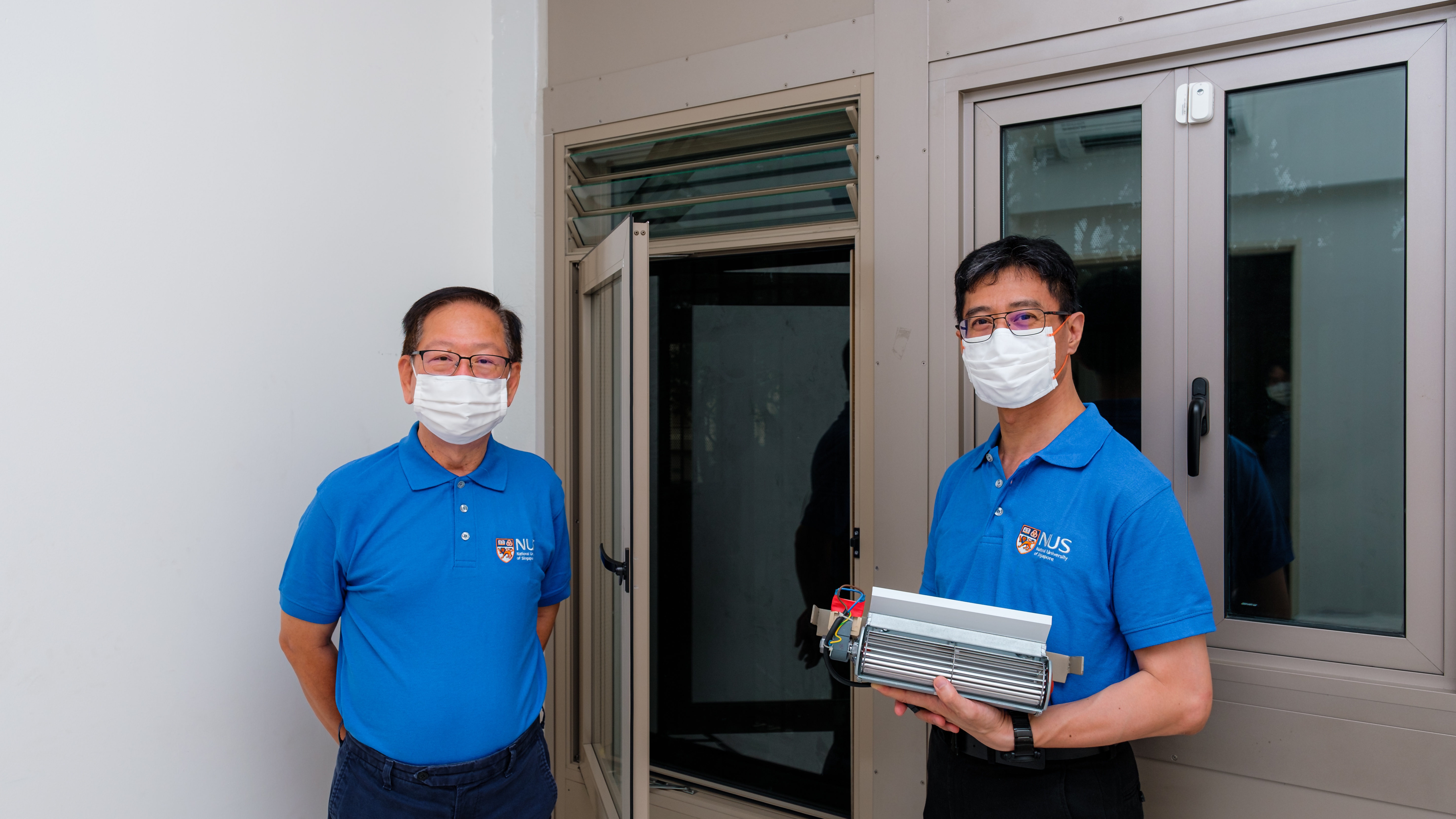Singapore, 3 February 2021 – Home owners, especially those staying in noisy districts, can look forward to greater living comfort with a new invention by researchers from the National University of Singapore (NUS) School of Design and Environment (SDE) that reduces outdoor noise and improves indoor ventilation.
Called the Acoustic Friendly Ventilation Window (AFVW), this novel system cuts environment noise levels by 26 decibels (dB), which is approximately more than a fourfold reduction in terms of a human’s perception of loudness. It can also achieve four times better ventilation than an open conventional window.
Urban noise has long been a problem for high-density cities such as Singapore where the average outdoor sound level is about 69.4 dB. To prevent outdoor noise, an enclosed air-conditioned space would be an ideal solution. However, this would mean increased energy consumption and reduced natural ventilation. At the same time, as the global spread of COVID-19 continues, more attention has also been paid to redesigning built environments and spaces to ensure sustainability, physical well-being and emotional wellness.
With a focus on improving wellness, aural comfort and indoor air quality, Dr Eddie Lau Siu-Kit from the Department of Architecture and Honorary Fellow Dr Lee Siew Eang from the Department of Building, had developed the AFVW together with former colleagues Dr Du Liangfen and Mr Martin Konrad Danzer, who had both worked on the project while they were with SDE.
Better noise reduction and ventilation
Adopting labyrinth air path and sound absorption techniques that have better noise reduction at a broader range of frequencies, the AFVW was fabricated and installed at the NUS-CDL Smart Green Home for testing since December 2019.
Measuring height 1.8m by width 0.88m by thickness 0.15m, the AFVW consists of two layers of glass panes with two staggered vents and a mechanical ventilation system. The glass panes are designed 0.6 cm thick and are set 8.5 cm apart. In order to achieve better sound insulation performance, sound absorbers are installed along the sides between the glass panes.
Sound tests based on international standards conducted at the NUS-CDL Smart Green Home showed that the combination of the double glass panes and the sound absorbers was able to reduce typical traffic noise by 26 dB. This effectively means that the human’s perception of loudness is reduced by more than four times. Every 10 dB reduction in sound levels is about half of the human’s perception of loudness.
While keeping the noise out, the AFVW is also able to provide natural ventilation through two open vents. Air flow passes through a staggered vent at the bottom of the window and out through another staggered vent at the top. A mechanical ventilation system is installed in between the glass panes to enhance the indoor air change. Using tracer gas simulating as a “pollutant” which was injected into a room installed with the AFVW and another with an open conventional window, the team found that the concentration of tracer gas, i.e. the removal of the “pollutant”, decreases four times faster for the AFVW than for open conventional windows.
This means that the system could potentially improve thermal comfort with minimal energy consumption compared to natural ventilation. A dust particle filter, similar to those used in air-conditioning units, can also be added to the system to filter dust particles or pollutants.
“The AFVW provides additional ventilation as well as sound insulation for the indoor environment, and this is particularly important for improving indoor air quality and potentially mitigating the spread of infectious diseases,” shared Dr Eddie Lau, leader of the research team.
Pilot trial at CDL premises
The AFVW prototype will be installed at City Developments Limited’s (CDL) premises for test bedding and system refinements to make it viable for commercial and residential living applications. This is part of a partnership under two NUS-CDL platforms: the NUS-CDL Smart Green Home and Tropical Technology Labs.
Contributing to sustainability research at NUS-CDL Smart Green Home
The NUS-CDL Smart Green Home is a unique indoor test-bed environment that serves as a platform for holistic and innovative experimental studies on smart features, green building technologies and design for sustainable living.
Situated in SDE4, Singapore’s first new-build net-zero energy building, NUS-CDL Smart Green Home is a 100 m2 full-size home designed for plug-and-play experimentation of new smart materials, systems and finishes.
“The AFVW is one of SDE’s many research outcomes strategically aligned with our ‘Well & Green’ vision that emphasises a people-centric integrated design approach. The NUS-CDL Smart Green Home allows customisation to facilitate cross-disciplinary research and development, ultimately creating a well-designed and healthy indoor environment,” said SDE Dean Professor Lam Khee Poh.
